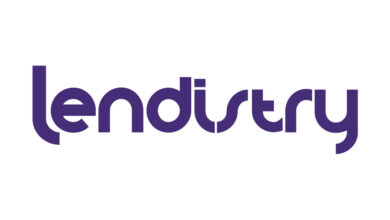Why Now Is The Best Time To Be A Solopreneur

UNSPLASH.COM
In a widely-circulated interview with Reddit co-founder Alexis Ohanian, OpenAI CEO Sam Altman said he’s confident we’re on the cusp of seeing a billion-dollar unicorn with less than ten employees. But he didn’t stop there. He also revealed he’s got a betting pool with his tech CEO group chat predicting when a founder will reach a billion-dollar valuation without hiring anyone. This would have been unimaginable without AI, he said. “But now, it will happen.”
I’ve always been a proponent of slow, deliberate growth. As the bootstrapped solo founder of Jotform, it comes with the territory.
But between the growing power of online tools, including AI, and the increasing prevalence of contractors, there’s less reason than ever for entrepreneurs to take on a co-founder or rush into hiring. In fact, I’d argue that there’s never been a better time to be a solo founder. Here are some ways “invisible teams” are changing the way we work.
AI Tools
Rather than raising vast quantities of capital, solopreneurs are taking advantage of AI to do a lot of the heavy lifting for them. In fact, one study found that AI can boost business productivity by up to 40%.
As Zach Sekar, co-founder of AI accelerator program and community The Fulcrum, put it: “I believe venture capital (VC) as we know it will become obsolete in this next phase of startup entrepreneurship because we don’t need outside funds or expensive teams to make a huge impact,” he said. “The costs of launching, testing, and iterating on solutions have dropped precipitously in recent years.”
Already, there are tons of AI products that can dramatically increase a solopreneur’s efficiency and streamline operations. On reddit’s r/Entrepreneur, users regularly share the tools they use for everything from one-off projects like logo generation (ie, Logoai.com), to those that automate entire workflows, like Talonic. With the right prompt, I’ve found that ChatGPT can be incredibly helpful for automating all kinds of busywork, from generating ad copy to sending more effective emails.
And if you think there’s a job that AI can’t do, it’s worth doing some research—you might be surprised.
“Most people are unaware of just how powerful AI is, barely skimming the surface with ChatGPT. But, AI’s capabilities can transform operations and productivity for small businesses and solopreneurs,” Jeremy Redman, founder of the browser automation tool TaskMagic, told Forbes contributor Jia Rizvi. “Most are just intimidated by the learning curve.”
My advice? Take stock of your own skills, and figure out what you’re missing to take your business forward. Then, research what potential AI tools are out there to help you fill the gaps.
Online Learning
There’s no avoiding it: When you start a business, there are going to be some things—a lot of things—you don’t know how to do. You’re going to have to learn.
Yes, learning the basics of branding or digital marketing can be time-consuming, but you don’t need an advanced degree in those fields to do them adequately, at least in your company’s early days. At my company, I did our design work on my own for a year before finally hiring a full-time designer. I also did the development, marketing, support, HR—you name it, and at one point, I did it.
To do all that, I took advantage of a lot of resources—everything from books and podcasts to online resources like LinkedIn Learning and YouTube. With the availability of so many tools, there’s not much you can’t figure out on your own.
Freelancers And Independent Contractors
While AI may cut out lots of needless busywork, there are plenty of tasks best left to actual humans. But you don’t necessarily need a full-time employee to do the job. In some circumstances, what you want is a freelancer or independent contractor.
Though similar, there is a subtle difference between freelancers and independent contractors: A freelancer is a non-permanent, self-employed worker who makes their living taking on multiple jobs for multiple clients, usually short-term. An independent contractor, on the other hand, is more like a temporary employee who is also free to take on multiple clients.
Hiring either can be ideal if you have a specific project or task you want done. It’s also a great way to test the waters before committing to a full-time hire. Onboarding is much less cumbersome, and you can start with a short-term contract to see how it works out.
Freelancing has become big business in recent years. A survey from the Upwork Research Institute found that in 2023, freelancers contributed $1.27 trillion to the US economy in annual earnings, a 78% increase from 2014. People are eschewing full time roles for many of the same reasons they choose to become entrepreneurs: The freedom to set their own schedules and control what they do with their time. In this way, it’s a win-win system for both freelancers and employers.
But before you jump into hiring a freelancer or contractor, remember: They’re not full-time employees, and you can’t expect the same output as you would from someone salaried. That means you have to stay within the scope of work you agreed upon, nor can their schedule be dictated to them. If you’re unsure what differentiates an employee from a contractor, check the employment laws in your area.
Remote Employees
In general, I’m a fan of in-person work environments. But especially when your company is just starting out, remote employees offer a lot of advantages—you save money on office space, and your hires can be located anywhere in the world.
WFH is here to stay, and there are tons of ways for far-flung teams to stay connected. Communications platforms like Slack and Zoom help teams stay in touch, while project management solutions like ClickUp, Jira and Monday.com are essential for making sure projects are on track and everyone is aligned. You can even gauge your teams’ happiness and engagement with tools like Lattice and Bonusly.
Of course, these products alone can’t ensure a well-run company—you also have to make sure you’re fostering a sense of belonging and inclusion, which requires setting clear expectations and communicating regularly.
No one—not even Sam Altman—knows for sure when we’ll see our first one-person unicorn. But what is certain is that with the help of invisible teams, solopreneurship is more doable than ever.



